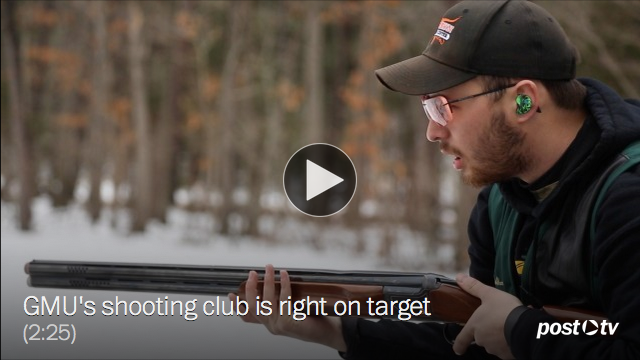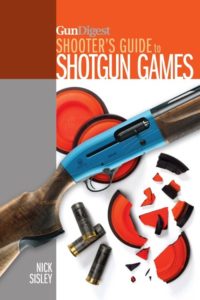
Also Check Out:
The American university has become known for encouraging an experimental attitude in its students. That’s leading to results some of those institutions may never have expected.
Collegiate competitive shooting is on the upswing, according to a recent article in the Washington Post. And swelling the ranks of these teams and clubs are, in many cases, newly minted shooters.
The above video from the Post, provides a good example in Renee Murphy. The captain of the George Mason University Trap and Skeet Club said she picked up a gun for the first time shortly before heading off to college, then pretty much joined the school’s club on a whim.
The other interesting aspect of the uptick in college-level competitive shooting is where it’s happening. The article begins by profiling competitors at MIT, then goes on to list a number of unexpected institutions:
Teams are thriving at a diverse range of schools: Yale, Harvard, the University of Maryland, George Mason University, and even smaller schools such as Slippery Rock University in Pennsylvania and Connors State College in Oklahoma.
“We literally have way more students interested than we can handle,” said Steve Goldstein, one of MIT’s pistol coaches.

While interest in these sports is picking up there are many hints dropped in the article that these schools have a long history behind the trigger. Take MIT's practice facilities, for instance:
MIT’s pistol and rifle teams practice about four times a week underneath a gym. The range seems Paleolithic compared with higher-end establishments with expensive electronic target retrieval systems. Students send and retrieve their targets on a metal wire by winding a hand crank. Shooting booths are separated by window screens.
Interestingly, at least for the engineering school, its aging facilities are juxtaposed against its cutting-edged athletes:
Students use air guns and standard .22-caliber competition rifles and pistols. In a pinch, they have made tiny replacement parts for grips with a 3-D printer, giving them an advantage over less tech-savvy schools.
Of course, this being an article in a publication a bit less enthusiastic about competitive shooting than say Gun Digest, there tends to be low-key pearl clutching. In particular, the article wants to make it clear that the surge is due to gun industry money:
The National Shooting Sports Foundation (NSSF), a powerful firearms lobbying group, has awarded more than $1 million in grants since 2009 to start about 80 programs. A couple who own a large firearms accessories company created the MidwayUSA Foundation, funding it with nearly $100 million to help youth and college programs, including MIT’s. The National Rifle Association organizes pistol and rifle tournaments, including the national championships next weekend in Fort Benning, Ga.
It would have been nice to have had some context to how this sports-wide boosterism compares to other such athletic support at the college level. Wonder if it's more or less than what the athletic shoe industry money has donated to University of Oregon football via Nike founder Phil Knight. Oh well, guess we'll never know.
Don’t let that nit picking sour you on reading the entire article, because it’s worth the time. If anything, it’s heartening to hear about a new generation of shooters discover the joy of a steady hand, sharp eye and crisp trigger break.
Keep Your Hearing Intact
Stay on target with the hearing protection you need without the size or bulk of muffs with the Sport Shooter’s Hearing Protection Kit.


![Best Concealed Carry Guns In 2025 [Field Tested] Wilson Combat EDC X9S 1](https://gundigest.com/wp-content/uploads/Wilson-Combat-EDC-X9S-1-324x160.jpg)


![Best 9mm Carbine: Affordable PCCs [Tested] Ruger Carbine Shooting](https://gundigest.com/wp-content/uploads/Ruger-Carbine-Shooting-100x70.jpg)
![Best AR-15: Top Options Available Today [Field Tested] Harrington and Richardson PSA XM177E2 feature](https://gundigest.com/wp-content/uploads/Harrington-and-Richardson-PSA-XM177E2-feature-100x70.jpg)
